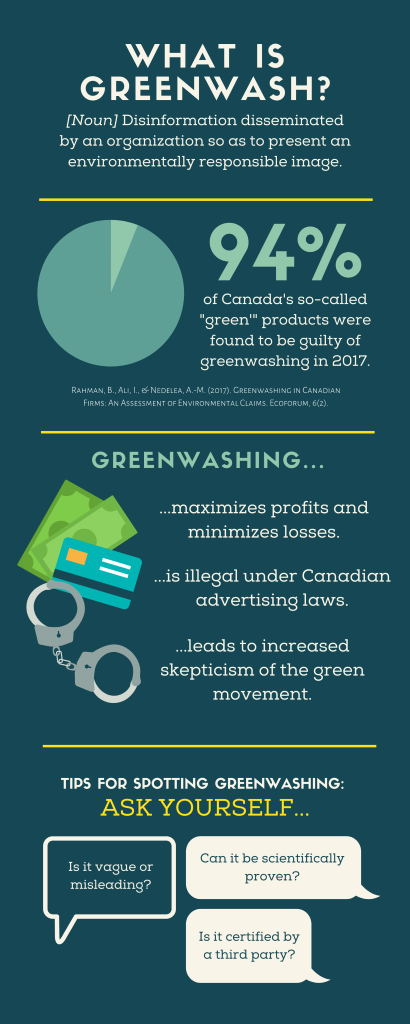Please welcome Ania Pitula, a devoted staff member of Sustainability Leadership, who is our guest blogger for this month’s post on “Green Marketing”.
1. Green By Association: Environmental terms/images are used so that even if products have no environmental benefits, consumers associate them with positive environmental attributes.
2. Lack of Definition: Vague environmental claims that may only be relevant in a specific context, such as certain ‘non-toxic’ chemicals.
3. Unproven Claims: Environmental claims are made without supporting evidence.
4. No-Consequence: A company uses a valid claim about a product as the basis for a further claim that is not warranted, but may on its surface appear to be reasonable.
5. Forgetting The Life Cycle: A company chooses one easily understood aspect of a product’s environmental profile to highlight, while ignoring other significant impacts.
6. Bait & Switch: A company heavily promotes the environmental attributes of a single product, while selling a bulk of otherwise similar products that lack the same attributes.
7. Rallying Behind a Lower Standard: A product earns an apparently valid certification, but the product’s manufacturer had influenced the development of the standard in a way that makes the certification less meaningful than it appears.
8. Reluctant Enthusiast: Lobbying against new environmental measures claiming that they will be too costly.
9. Outright Lying: Bending the truth or simply ignoring it.
Take a moment to consider if you’ve been ‘greenwashed’ into buying something before or perhaps have implemented some of these tactics into your own advertising campaigns in the past. It’s important to recognise how much of an influence modern-day marketing has and remember that in order to stand out from competitors and build the best business value, honest sustainability is always the smarter choice.
Building Business Credibility.
The 2014 Nielson Global Survey on Corporate Responsibility found that “55% of consumers were willing to accept higher prices from companies deemed to have a positive social and environmental impact.” There are clear economic benefits to choosing sustainability and doing it correctly. Consumers want to support businesses that are working in compliance with legal standards and regulations.
So how do you go about building the credibility of your sustainability claims to keep that momentum?
It all comes down to the level of transparency in your marketing approach. You’ll find more details on this topic in our monthly blog but here’s a summary of what you should be focusing your efforts on.
How you REFLECT your brand vision and goals: As a truly sustainable business, your priority should become building an organisational system that directly relies on restorative processes and regenerative resources. The ultimate goal of your business should be to provide a product or service which satisfies human needs and implements long-term environmental and social protection. It’s crucial to identify how you do this as a business and then communicate that message to your audience. Clearly stating what your organisation is doing builds consumer trust and outlining the positive initiatives you are working towards achieving creates internal motivation for your own team as well.
It’s also important to note that even if your business is struggling to keep up with sustainability practices or has a long way to go in comparison to others in your industry, simple acknowledgement of this fact is a step in the right direction. It’s understandable however, that you may initially feel resistant to sharing your smaller successes, a concept known as ‘green blushing’. “Michael Dunn, director of OgilvyEarth…says that these companies prefer to talk about their environmental initiatives once the details are in place, reducing the chance that they will be criticised by green groups. The key to publicizing these projects…is to make sure that the right message reaches the public in a coordinated manner.” (Sustainable Business 360, 2010).
As a sustainable business, how the public eye perceives you will directly reflect your business success. This is where transparency comes into play: how clearly you define and showcase your mission, values and goals. Sustainable initiatives you take should adhere to creating positive and fundamental change to society and the environment. It’s a balance of catering to human needs while also addressing and responding to large-scale global issues. When this is done, your brand identity becomes instantly associated with good morale building trustworthiness and integrity
|
|



